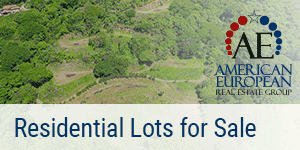Estimated Reading Time: 6 Minutes
Are you buying a condo in Costa Rica and you don’t know how a condo inspection should work?
Obviously, buying a condo is different from buying a single-family dwelling for many reasons. In Costa Rica, real estate is sold “as is”. Therefore, a home inspection is nothing more than a tool to make a home buyer aware of potential issues that can be wrong with the property.
This tool should be used to make an informed decision to either walk away from the purchase or not.
For that reason, a home inspection report will show a list of repairs. If those repairs are very expensive, the buyer can decide to request repairs by the seller. Or the repairs can be made after closing by the buyer. I always try to get the home inspection out of the way before the buyer and seller formally agree on the purchase/sale and before there is any money down.
That way, there is no risk for the buyer.
It is clear that with a single-family dwelling the owner is responsible for everything the home inspection report shows. But how is it the same with a condo inspection?

What is a condo?
In Costa Rica, we call both an apartment in a condo building (or flat) as well as a townhouse in a gated community a condo.
Therefore, it is important to know which area is private and which area is a common area first. The registered survey map, or Plano Catastrado, will show the private area of the condo you’re buying. The description can be found in the constitution of the condominium. This is where you can also find the bylaws or Covenants, Conditions & Restrictions (CC&Rs) – Reglamento de condominio, administration general y construccion del condominio.
Private area
Normally, the private area of a condo apartment is from the front door inward. The rest of the building and exterior areas are common areas.
In the case of a townhouse, the whole unit is the responsibility of the owner, except for exterior painting.
7 Important areas
A condo inspection should include the following 7 important areas
1.Roof
The roof of a townhouse should always be included in the condo inspection. BUT, in the case of an apartment building, the roof should only be included when the condo is a penthouse. Just looking at the ceilings of the penthouse should be enough to learn if there are any leaks. To get access to the roof, the home inspector should request special permission from the administration to go on the roof to inspect.
Nonetheless, roof repairs should be done by the Home Owner Association (HOA) and not by the penthouse owner.
2. Walls
Only the interior walls and the inside of the exterior walls are the responsibility of the owner. Therefore, the condo inspection should include repairs of those walls, baseboards, floors, doors, and framing.
3. Electrical systems
The condo inspection should only include the electrical systems of the condo itself. Any exterior electrical or lighting systems are the responsibility of the HOA. The breaker box is usually located in the laundry or the kitchen. A good home inspector should be able to identify any electrical problems in the condo pretty easily.

4. Air Conditioning
Few condominium buildings in Costa Rica have a central air conditioning system. Usually, you’ll only find those in the beach areas. When a real estate developer constructs the building, sometimes the first buyer has the option to include the ducts or not. Once the condo has changed hands several times, nobody remembers if the ducts were installed or not. If that happens, a condo inspection will only show if they are installed when destroying a part of the ceiling.
Evaporators and condensers are usually installed on the roof or on the fire escape of the building. A simple solution is a ductless A/C, which is easy to check. But this should be done by an air conditioning specialist and not by a home inspector. Sarco Architects gives a very good explanation here about A/C issues in Costa Rica.
5. Kitchen and laundry
The condo inspection report should include all necessary repairs of kitchen and laundry cabinetry, faucets, plumbing, and appliances if included in the sale.
6. Parking
There can’t go much wrong with a parking spot, but you never know. You’d want to identify which parking spot(s) belongs to the condo. You also want to know if the parking is titled or a common area. Sometimes, there is a storage area you’d want the condo inspection to include.
7. Balcony and windows
Although a balcony usually is a private area, the exterior walls are common property. Windows may be broken and are the responsibility of the owner.

Common areas
So what should you do about the common areas? If the condominium consists of only a few units, the repairs per unit can be pretty high. But is the home inspector qualified to inspect for example the water treatment plant? Probably not.
A short description of the maintenance of the common areas in the inspection report should suffice.
If the common areas are not well maintained, ask for the HOA financials. Check for high extraordinary quotes and reserve funds. Red flags are low or no reserve funds and few repairs during the last 2 years.
Looking for an expert realtor to represent you as a buyer’s agent? Then contact us now.


















